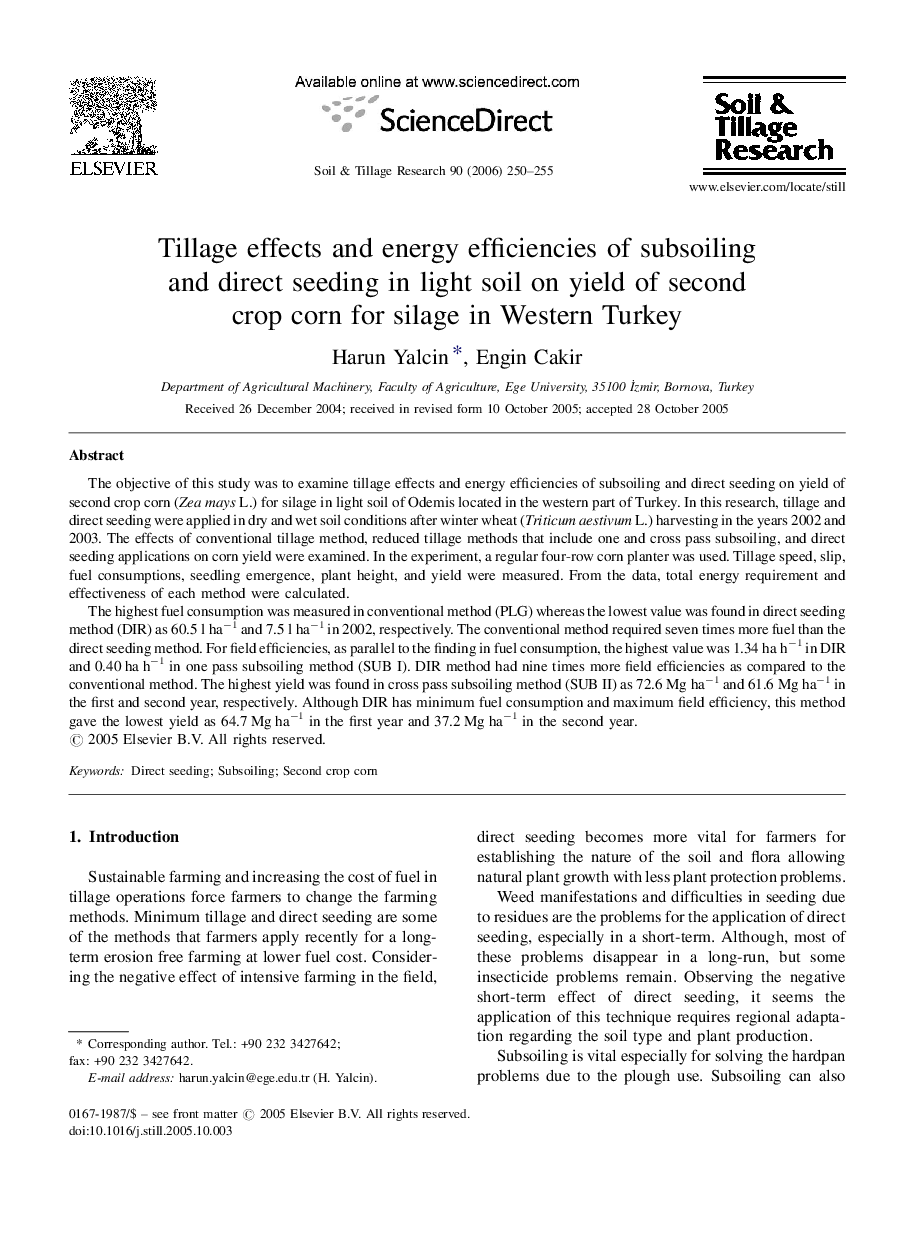| Article ID | Journal | Published Year | Pages | File Type |
|---|---|---|---|---|
| 306835 | Soil and Tillage Research | 2006 | 6 Pages |
The objective of this study was to examine tillage effects and energy efficiencies of subsoiling and direct seeding on yield of second crop corn (Zea mays L.) for silage in light soil of Odemis located in the western part of Turkey. In this research, tillage and direct seeding were applied in dry and wet soil conditions after winter wheat (Triticum aestivum L.) harvesting in the years 2002 and 2003. The effects of conventional tillage method, reduced tillage methods that include one and cross pass subsoiling, and direct seeding applications on corn yield were examined. In the experiment, a regular four-row corn planter was used. Tillage speed, slip, fuel consumptions, seedling emergence, plant height, and yield were measured. From the data, total energy requirement and effectiveness of each method were calculated.The highest fuel consumption was measured in conventional method (PLG) whereas the lowest value was found in direct seeding method (DIR) as 60.5 l ha−1 and 7.5 l ha−1 in 2002, respectively. The conventional method required seven times more fuel than the direct seeding method. For field efficiencies, as parallel to the finding in fuel consumption, the highest value was 1.34 ha h−1 in DIR and 0.40 ha h−1 in one pass subsoiling method (SUB I). DIR method had nine times more field efficiencies as compared to the conventional method. The highest yield was found in cross pass subsoiling method (SUB II) as 72.6 Mg ha−1 and 61.6 Mg ha−1 in the first and second year, respectively. Although DIR has minimum fuel consumption and maximum field efficiency, this method gave the lowest yield as 64.7 Mg ha−1 in the first year and 37.2 Mg ha−1 in the second year.
